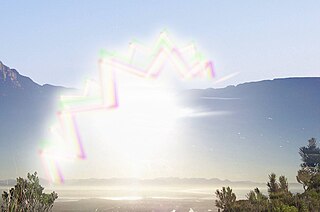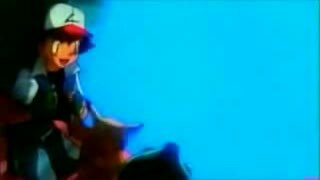Related Research Articles

Epilepsy is a group of non-communicable neurological disorders characterized by recurrent epileptic seizures. An epileptic seizure is the clinical manifestation of an abnormal, excessive, purposeless and synchronized electrical discharge in the brain cells called neurons. The occurrence of two or more unprovoked seizures defines epilepsy. The occurrence of just one seizure may warrant the definition in a more clinical usage where recurrence may be able to be prejudged. Epileptic seizures can vary from brief and nearly undetectable periods to long periods of vigorous shaking due to abnormal electrical activity in the brain. These episodes can result in physical injuries, either directly such as broken bones or through causing accidents. In epilepsy, seizures tend to recur and may have no immediate underlying cause. Isolated seizures that are provoked by a specific cause such as poisoning are not deemed to represent epilepsy. People with epilepsy may be treated differently in various areas of the world and experience varying degrees of social stigma due to the alarming nature of their symptoms.

An epileptic seizure, informally known as a seizure, is a period of symptoms due to abnormally excessive or synchronous neuronal activity in the brain. Outward effects vary from uncontrolled shaking movements involving much of the body with loss of consciousness, to shaking movements involving only part of the body with variable levels of consciousness, to a subtle momentary loss of awareness. Most of the time these episodes last less than two minutes and it takes some time to return to normal. Loss of bladder control may occur.
Photosensitive epilepsy (PSE) is a form of epilepsy in which seizures are triggered by visual stimuli that form patterns in time or space, such as flashing lights; bold, regular patterns; or regular moving patterns. PSE affects approximately one in 4,000 people.
Light sensitivity or photosensitivity refers to a notable or increased reactivity to light. Apart from vision, human beings have many physiological and psychological responses to light. In rare individuals an atypical response may result in serious discomfort, disease, or injury. Some drugs have a photosensitizing effect. Properties of natural or artificial light that may abnormally affect people include:
Pokémon is an anime television series that originally debuted in Japan on April 1, 1997. Throughout its run of over 1,200 episodes, specific episodes have been unaired or pulled from rerun rotation in certain countries while others have been altered or entirely banned, some of which include racial stereotyping such as Jynx and the characters appearing in blackface. Notably, the globally banned episode "Dennō Senshi Porygon", which aired only once on Japan's TV Tokyo on December 16, 1997, features a series of rapidly alternating red and blue frames that provoked epileptic seizures in hundreds of children.

An aura is a perceptual disturbance experienced by some with epilepsy or migraine. An epileptic aura is a seizure.

"Dennō Senshi Porygon" is the 38th episode of the Pokémon anime's first season. Its sole broadcast was in Japan on December 16, 1997.
Reflex seizures are epileptic seizures that are consistently induced by a specific stimulus or trigger making them distinct from other epileptic seizures, which are usually unprovoked. Reflex seizures are otherwise similar to unprovoked seizures and may be focal, generalized, myoclonic, or absence seizures. Epilepsy syndromes characterized by repeated reflex seizures are known as reflex epilepsies. Photosensitive seizures are often myoclonic, absence, or focal seizures in the occipital lobe, while musicogenic seizures are associated with focal seizures in the temporal lobe.

The Epilepsy Society is the largest medical charity in the field of epilepsy in the United Kingdom, providing services for people with epilepsy for over 100 years. Based in Chalfont St Peter, Buckinghamshire, UK, its stated mission is "to enhance the quality of life of people affected by epilepsy by promoting research, education and public awareness and by delivering specialist medical care and support services." The Epilepsy Society has close partnerships with the National Hospital for Neurology and Neurosurgery and the UCL Institute of Neurology, both located in Queen Square, London.
Flicker vertigo, sometimes called the Bucha effect, is "an imbalance in brain-cell activity caused by exposure to low-frequency flickering of a relatively bright light." It is a disorientation-, vertigo-, and nausea-inducing effect of a strobe light flashing at 1 Hz to 20 Hz, approximately the frequency of human brainwaves. The effects are similar to seizures caused by epilepsy, but are not restricted to people with histories of epilepsy.
The Epilepsy Foundation, also Epilepsy Foundation of America (EFA), is a non-profit national foundation, headquartered in Bowie, Maryland, dedicated to the welfare of people with epilepsy and seizure disorders. The foundation was established in 1968 and now has a network of 59 affiliates. The foundation's programs aim to "ensure that people with seizures are able to participate in all life experiences; and to prevent, control and cure epilepsy through research, education, advocacy and services."

"Flashing Lights" is a song by American hip-hop artist Kanye West. It may have features with Detroit R&B singer Dwele and contains background vocals from Australian singer Connie Mitchell. West co-wrote and co-produced the song with Eric Hudson and released it on November 12, 2007, as the fourth single for his third studio album, Graduation. The single's cover art was designed by Japanese pop artist Takashi Murakami. The single received acclaim from music critics upon release.
The term Harding test is generically understood to mean an automatic test for photosensitive epilepsy (PSE) provocative image sequences in television content. This is properly known as a PSE test since the publication of the Digital Production Partnership (DPP) technical requirements and the DPP PSE Devices document updated in November 2018.

Ravelry is a free social networking service and website that beta-launched in May 2007. It functions as an organizational tool for a variety of fiber arts, including knitting, crocheting, spinning and weaving. Members share projects, ideas, and their collection of yarn, fiber and tools via various components of the site.
Epilepsy and driving is a personal and safety issue. A person with a seizure disorder that causes lapses in consciousness may put the public at risk in the event that a seizure occurs while they are operating a motor vehicle. Not only can a seizure itself cause an accident, but anticonvulsants often have side effects that include drowsiness. People with epilepsy are more likely to be involved in a traffic accident than people who do not have the condition, although reports range from minimally more likely up to seven times more likely.

In 2010, Katherine Hudson cofounded "Wear it Purple Day" specifically to support and raise awareness for LGBTQIA+ youth.This event encourage individuals to wear purple on the last Friday of August every year as a sign of support, ensuring LGBTQIA+ youth know they are not alone. central to the day is the idea of making support visible and emphasising unity and belonging.
Generally, seizures are observed in patients who do not have epilepsy. There are many causes of seizures. Organ failure, medication and medication withdrawal, cancer, imbalance of electrolytes, hypertensive encephalopathy, may be some of its potential causes. The factors that lead to a seizure are often complex and it may not be possible to determine what causes a particular seizure, what causes it to happen at a particular time, or how often seizures occur.
"All of the Lights" is a song by American rapper Kanye West, released as the fourth single from his fifth studio album, My Beautiful Dark Twisted Fantasy (2010). It was produced by West and features additional vocals from several other recording artists, including Drake, John Legend, The-Dream, Alicia Keys, Fergie, Elton John, Ryan Leslie, Charlie Wilson, Tony Williams, La Roux, Alvin Fields, Ken Lewis, Kid Cudi, and Rihanna, with the latter two being credited on the official music video and the official single, but not on the album version of the song. The song is often played along with its accompanying interlude “All of the Lights (Interlude)”
People with epilepsy may be classified into different syndromes based on specific clinical features. These features include the age at which seizures begin, the seizure types, and EEG findings, among others. Identifying an epilepsy syndrome is useful as it helps determine the underlying causes as well as deciding what anti-seizure medication should be tried. Epilepsy syndromes are more commonly diagnosed in infants and children. Some examples of epilepsy syndromes include benign rolandic epilepsy, childhood absence epilepsy and juvenile myoclonic epilepsy. Severe syndromes with diffuse brain dysfunction caused, at least partly, by some aspect of epilepsy, are also referred to as epileptic encephalopathies. These are associated with frequent seizures that are resistant to treatment and severe cognitive dysfunction, for instance Lennox-Gastaut syndrome and West syndrome.

The Incredibles is an American media franchise created by Pixar Animation Studios. Brad Bird wrote and directed both films, and Craig T. Nelson, Holly Hunter, Sarah Vowell, and Samuel L. Jackson are part of the cast. The first film, The Incredibles, was released in November 2004 and received acclaim from critics, winning the Academy Award for Best Animated Feature. The second film, Incredibles 2, was released in June 2018, received mostly positive reviews and set the record for best opening weekend for an animated film with $183 million. The series has grossed a combined $1.8 billion worldwide.
References
- 1 2 "Epilepsy Action History Wall 1950-2010" (PDF). Epilepsy Action. Archived from the original (PDF) on 4 October 2015. Retrieved 16 March 2023.
- ↑ "British Epilepsy Association, registered charity no. 234343". Charity Commission for England and Wales.
- 1 2 3 4 5 'Epilepsy Action 2022 Annual Report and Accounts', Epilepsy Action, 4 April 2023
- ↑ "Council of Management". Epilepsy Action. Retrieved 17 March 2023.
- ↑ "'3,000 runners tackle Bradford's biggest ever 10K'". Telegraph and Argus. 17 March 2019. Retrieved 26 February 2020.
- ↑ Bond, David (13 June 2007). "Olympics inquiry into logo-launch seizures". ISSN 0307-1235.
- ↑ "London 2012 Olympics withdraw film after seizures". Epilepsy Action. 6 June 2007. Archived from the original on 23 November 2007. Retrieved 24 March 2023.
- ↑ "'Kanye West's 'All Of The Lights' Video Gets Epilepsy Warning'". MTV News. 25 February 2011.
- ↑ "'Epilepsy charity criticises Twitter for flashing ads'". BBC News. 10 July 2015.